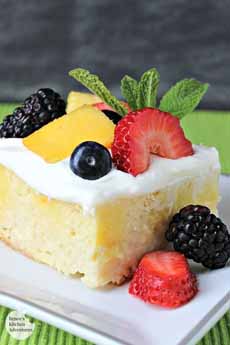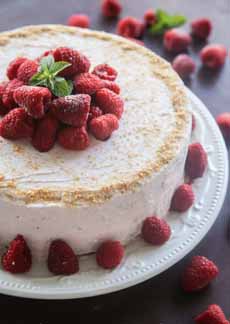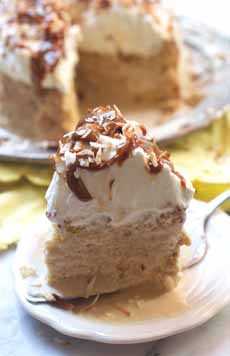TIP OF THE DAY: Celebrate Cinco De Mayo With Tres Leches Cake
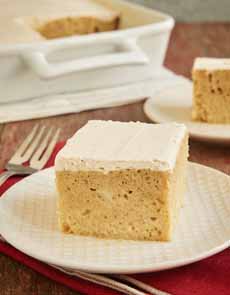
[1] Basic tres leches cake with added rum. Here’s the recipe from Bake Or Break. [2] Add some fruit garnish. Here’s the recipe from Renee’s Kitchen Adventures. [3] Go chocolate, with this recipe from The Domestic Rebel. [4] Go fancy for a special occasion. Here’s the recipe from Vika’s Home Goods. |
First: There is a recipe for a specialty Tres Leches cake below, Caramel Coconut Tres Leches Cake. Tres Leches cake is a vanilla sponge cake that is baked, perforated and soaked in three different milk products: evaporated milk, sweetened condensed milk and whole milk. The cake absorbs the milks, making it moister and richer. It is then frosted with whipped cream or meringue, and often garnished with caramel, chocolate, coconut, liqueurs, nuts and tropical fruits. It’s not your grandmother’s sponge cake. Popular in Central America since the 19th century, pastel de tres leches (pastry with three milks) While the origin lacks clean documentation, food historians believe that tres leches cake most likely originated in Nicaragua in the early 1900s. The recipe was printed on the label of sweetened condensed milk cans to spur sales of the product. A number of recipe sources place the origin of the tres leches cake in Nicaragua, born from a recipe on the label of Nestle’s sweetened condensed milk. (More than a few recipes, from cheesecake to Chex Party Mix and Rice Krispies Marshmallow Treats, began in the development kitchens of manufacturers to promote more uses for their products.) Some sources say the recipe dates to 1875—but that’s the year Nestlé began distributing its condensed and evaporated milks, and seems to soon (their original purpose was to provide milk in areas where fresh milk was not available). Nestle Mexico cannot confirm a date, but did say that the company had published a recipe for Tres Leches Cake on the labels of milk cans sold in that country, and that the firm began manufacturing milk products in Mexico around World War II. Whatever the truth, “soaked” cakes had been a European tradition since medieval times: British rum cake, trifle, and fruitcake; Italian zuppa inglese and tiramisu, not to mention the soaked foods of the poor, bread pudding and pain perdu (French toast). The missing link is believed to be a Mexican cookbook with a recipe for “antes,” a bread soaked in wine and layered with milk custard, that appeared in Mexico in the 19th century [source]. A search of Mexican cookbooks by journalist M.M. Pack produced these related recipes: As the recipe traveled from region to region, local bakers added their own touches. In the rum-focused Caribbean islands, rum was added to the “soak.” In U.S. chefs added caramelized milk to create a cuatro leches cake [source]. Modern Tres Leches Cake Tres Leches Cake began to get noticed north of the border toward the end of the 20th century. |
|
|
Not to mention bundts, cupcakes, naked cakes, puddings and stack cakes (the originals were sheet cakes baked in rectangular pans), iced with cinnamon cream cheese frosting, dulce de leche buttercream, even topped with a layer of flan. |
||
|
RECIPE: CARAMEL COCONUT TRES LECHES CAKE Ingredients For One 8″-9″ Cake Audra, The Baker Chick, notes that she used a 7 inch springform pan, but thinks an 8- or 9-inch cake pan works the best. “The thicker the cake, the harder it is to really get those liquids to soak. Any of those options are fine, or you could double the recipe and use a 9 x 13 rectangular pan. 1. PREHEAT the oven to 350°F. Generously butter the inside and sides of a 8 or 9 inch round cake pan* and line with a parchment round. Sprinkle with flour- set aside. 2. COMBINE the egg yolks and ½ cup of the sugar in a large mixing bowl. Whisk until smooth and creamy. Set aside. 3. BEST the egg whites on medium high in a very clean stand mixer bowl or a large mixing bowl, using a whisk attachment until soft peaks form. Gradually add the sugar while the mixer runs and continue beating until stiff peaks form. 4. PILE about one-third of the egg whites into the yolk mixture. Gently fold them together until smooth. Add half of the flour and continue to gently fold, being careful to not deflate the egg whites. Repeat with another third of egg whites, the rest of the flour, and the last third of whites. Do not over-mix, but the batter should be smooth, airy and fluffy. |
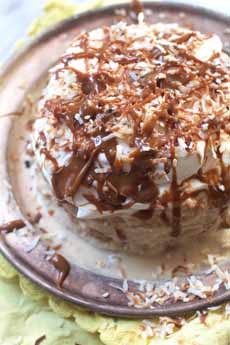
The Baker Chick’s take on Tres Leches Cake, adapted from a Williams-Sonoma recipe (photos courtesy The Baker Chick). |
|
|
5. POUR the batter into the prepared pan. Bake for 20-30 minutes, or until the top of the cake springs back when lightly touched or a toothpick inserted into the middle comes out clean. While the cake is baking, combine the soak ingredients in a liquid measuring cup and set aside. 6. RUN a knife around the edge of the cake pan, and invert the cake onto a wire rack. Peel off the parchment, then flip the cake right side up so it can cool. After the cake has cooled for about 15 minutes, use a fork to prick it all over, not forgetting the sides, edges and all over the top. Try to get pretty close to the bottom of the cake. 7. USE a spoon or pour the soaking liquid over the cake, a little at a time, waiting for it to absorb before adding more. Use the spoon and gently press the liquid into the cake•. It may seem like a lot of liquid, but use as much as you can to soak the cake. 8. CHILL the cake in the fridge for an hour or more, to really let the flavors soak and set. 9. WHIP the cream and once the cake is done chilling, dollop on the whipped cream, drizzle with extra dulce de leche and sprinkle on the toasted coconut. Store in the fridge until you’re ready to serve. ________________ *Audra, The Baker Chick actually used a new syringe to inject the liquid. You can buy similar devices for shooting liquid into cakes. She says: Pull up the liquid and then literally inject it into the sides and top of the cake. It works surprisingly well. |
||
